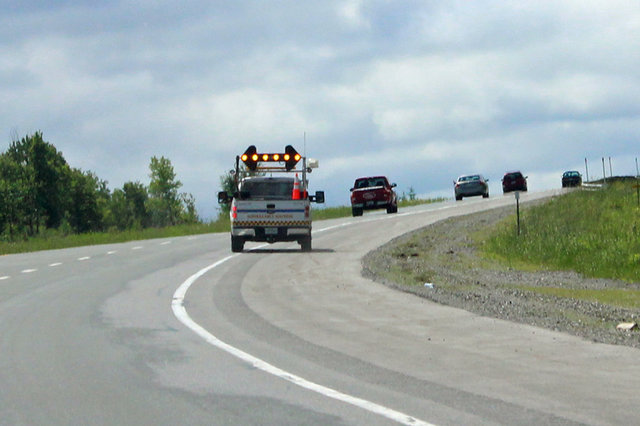December 12 2025
Digital Rearview Mirror on the 2026 GMC Sierra 1500 DenaliThe digital rearview mirror offers a wider view of the rear of the vehicle. Adjustable brightness, height, and zoom for maximum safety!
September 08 2017
- Marie-Andrée Boisvert
It also provides for penalties and demerit points for drivers who fail to comply with these rules of conduct.
In short, when an emergency vehicle, tow truck or surveillance vehicle is immobilized and its flashing or revolving lights are activated, the driver must respect a safety corridor. It must slow down and move as far as possible away from the immobilized vehicle, after making sure that it can be done safely. Failure to comply with a safety corridor or failure to give way to an emergency vehicle may result in a fine of $200 to $300 and 4 demerit points.

In the course of their duties, a number of workers, such as police officers, paramedics, firefighters, roadside inspectors, and all other professionals related to road maintenance, have to stop their vehicles on public roads to intervene. They all risk being hit by a vehicle and many have been injured or killed under these conditions. In order to eliminate this to a great degree, the risk is to observe the safety corridor and to properly execute the manoeuver in order to increase your safety and that of others on the road.
You must execute the manoeuver when one of the following vehicles is immobilized and its bright yellow arrow, and its or flashing or revolving lights are activated. As mentioned earlier, this pertains to police vehicles, ambulances, fire department vehicles, road inspector vehicles, tow trucks or any other surveillance vehicle.
To better understand the accepted manoeuvers, you can find documentation on the Transport Québec site. However, it’s much easier to view the video to fully understand the various situations.
Finally, respecting the safety corridor also means respecting the lives of several dads and moms who work for us. A manoeuver designed to save lives and takes just a few seconds.
Other Articles That May Interest You
December 12 2025
Digital Rearview Mirror on the 2026 GMC Sierra 1500 DenaliThe digital rearview mirror offers a wider view of the rear of the vehicle. Adjustable brightness, height, and zoom for maximum safety!
November 25 2025
Your Ultimate Guide to the GM TruckGeneral Motors pickups, whether they wear the Chevrolet or GMC badge, have dominated the North American market for decades. Although they share a common platform and mechanical components, each brand offers a distinct identity, style, and marketing approach. This guide will help you navigate the lineup and understand the key differences between these towing and hauling titans. Chevrolet: The...
October 24 2025
Expert Tips for High-Performance, Long-Lasting Winter TiresAs winter quickly approaches, your tires become the first line of defense between your vehicle and Québec’s often unpredictable roads. A complete inspection is essential to ensure your GM car, SUV, or truck maintains its stability, traction, and performance—no matter the conditions. Here are the four key elements to check before the cold season, along with expert advice from our technicians....